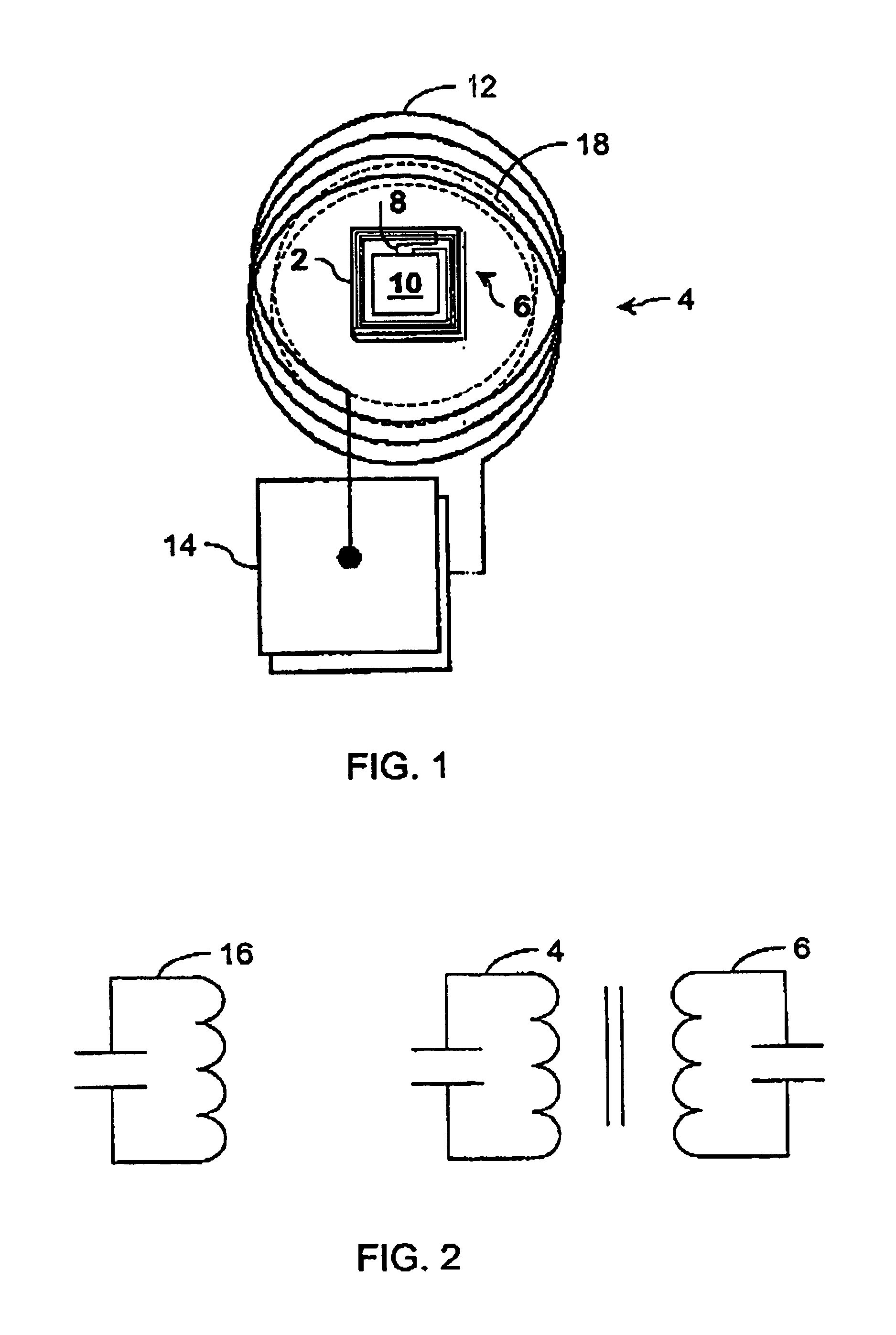Integrated circuit with enhanced coupling
a technology of integrated circuits and couplings, applied in the direction of near-field systems using receivers, instruments, burglar alarm mechanical actuation, etc., can solve the problems of increasing the cost of conventional passive rfid tags for dominant use. , to achieve the effect of optimizing the coupling efficiency and increasing the coupling efficiency
- Summary
- Abstract
- Description
- Claims
- Application Information
AI Technical Summary
Benefits of technology
Problems solved by technology
Method used
Image
Examples
Embodiment Construction
[0012]FIG. 1 illustrates one embodiment of the present invention system for conveying a radio frequency (RF) signal to an integrated circuit (IC). In one embodiment, the RF signal is generated by a base station (not shown). Alternatively, the RF signal is generated by any device for communicating with the IC.
[0013]The system includes IC 2 and intermediate resonant circuit 4. IC 2 and intermediate resonant circuit 4 are affixed proximate one another. The proximity is selected based on the characteristics of the IC 2, intermediate resonant circuit 4, and the RF signal.
[0014]IC 2 is an integrated circuit device for performing any desired function. IC 2 includes integral resonant circuit 6 and integrated circuitry (not shown) necessary for performing the desired function. In one embodiment, IC 2 is an RFID tag.
[0015]Integral resonant circuit 6 is any component or combination of components configured to resonate in response to an RF signal and to provide an electrical signal to the integ...
PUM
 Login to View More
Login to View More Abstract
Description
Claims
Application Information
 Login to View More
Login to View More - R&D
- Intellectual Property
- Life Sciences
- Materials
- Tech Scout
- Unparalleled Data Quality
- Higher Quality Content
- 60% Fewer Hallucinations
Browse by: Latest US Patents, China's latest patents, Technical Efficacy Thesaurus, Application Domain, Technology Topic, Popular Technical Reports.
© 2025 PatSnap. All rights reserved.Legal|Privacy policy|Modern Slavery Act Transparency Statement|Sitemap|About US| Contact US: help@patsnap.com


